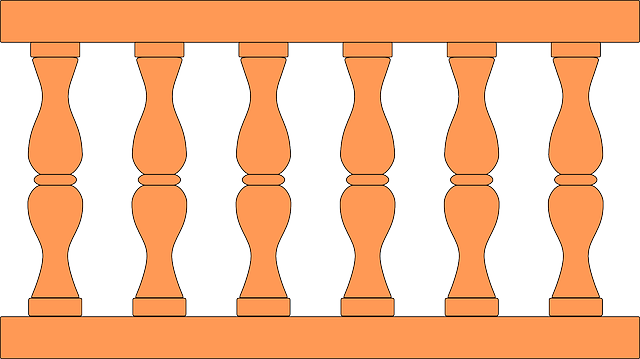For New Bedford, Massachusetts homeowners looking to enhance their outdoor space, installing a fence is a significant project. This comprehensive guide offers essential DIY tips for navigating each step of the process. From understanding local fencing regulations and selecting suitable materials to measuring, preparing the ground, and ensuring proper safety measures, we break down the key considerations for successful fence installation. Whether aiming to create a privacy barrier or define your property lines, these insights will empower you to tackle the task confidently.
- Understanding Your Fence Options for New Bedford Properties
- Measuring and Planning Your Fence Layout
- Preparing the Ground for Installation
- Assembly and Fitting of Fence Posts
- Attaching Fence Panels and Railings
- Final Touches and Safety Considerations
Understanding Your Fence Options for New Bedford Properties
When considering a DIY fence installation in New Bedford, homeowners have a variety of options to choose from, each with its own unique benefits and drawbacks. Wood remains a popular choice for its natural aesthetic appeal and relative affordability. However, it requires more maintenance than synthetic materials like vinyl or composite, which are known for their durability and low-maintenance requirements. Metal fencing offers both strength and longevity but can be costlier and may need professional installation for the best results.
Local climate and soil conditions also play a role in material selection. In New Bedford, homeowners should consider how salt air and potential frost could impact their fence’s longevity. Additionally, understanding local building codes and obtaining necessary permits before starting your project is crucial to avoid any legal issues or delays during installation.
Measuring and Planning Your Fence Layout
Before installing a fence, it’s crucial to measure and plan your layout carefully. Start by assessing the perimeter of your property to determine the total length of fencing needed. Use measuring tape to take precise measurements along the desired fence line, accounting for any bends or curves in the landscape. Mark these points clearly on the ground with stakes or flags to establish a visual guide.
Next, decide on the layout and style of your fence. Consider factors like where you want gates or entry points, the height requirements for privacy or security, and aesthetic preferences. Draw a rough sketch or use fencing software to visualize the final design. This planning stage ensures that your DIY fence installation goes smoothly and results in a functional, attractive addition to your New Bedford, Massachusetts property.
Preparing the Ground for Installation
Before installing your fence, preparing the ground is a crucial step. Clear any debris, such as branches or rocks, from the area where the fence will be erected. Digging and leveling the ground is essential to ensure a sturdy fence post placement. Use a level to check the terrain and make adjustments with a shovel or earth mover if necessary.
Remove any existing vegetation, like grass or weeds, that might interfere with the fence’s installation. This process creates a smooth base for your fence posts, guaranteeing they are set firmly in place and aligned correctly, resulting in a durable and attractive barrier.
Assembly and Fitting of Fence Posts
When assembling and fitting fence posts, precision is key to a sturdy and aesthetically pleasing fence. Start by clearing a wide area where your fence will stand, removing any obstructions like bushes or debris. Dig holes for each post using an auger or shovel, ensuring they are deep enough (at least a third of the post’s height) and wide enough (typically 8-12 inches in diameter) to provide stable support. Place concrete in each hole, allowing it to set completely before proceeding. Once the concrete is firm, carefully position your posts in the holes, aligning them vertically with a level. Secure them firmly using metal brackets or straps until the concrete cures fully, typically after 24-48 hours.
Attaching Fence Panels and Railings
Attaching fence panels and railings is a crucial step in your DIY installation process. Begin by ensuring your posts are securely planted and levelled. Next, attach the bottom rail to the posts using brackets or screws, creating a sturdy foundation for your panels. Line up each panel with the rails, securing them in place with nails or screws – make sure they fit snugly for maximum durability. For railings, measure and cut them to the appropriate length, then attach them vertically to the posts, ensuring they align with local building codes for height and spacing. Regularly check your work as you go to ensure a neat, uniform finish.
Final Touches and Safety Considerations
After completing the main installation process, it’s time to focus on the final touches to ensure your new fence is both aesthetically pleasing and safe. Check that all posts are securely fastened and level, and that all panels are properly aligned and connected. Inspect the gate for smooth operation and adjust hinges as needed. A well-installed gate can significantly enhance the security of your property.
Remember, safety should always be a priority throughout the entire DIY fence installation project. Ensure the work area is clear of debris and tools to prevent tripping hazards. Keep a close eye on young children or pets when the fence is being constructed or when they are playing near it. Regularly inspect the fence for any signs of wear and tear, and make repairs promptly to maintain its structural integrity and safety features.
